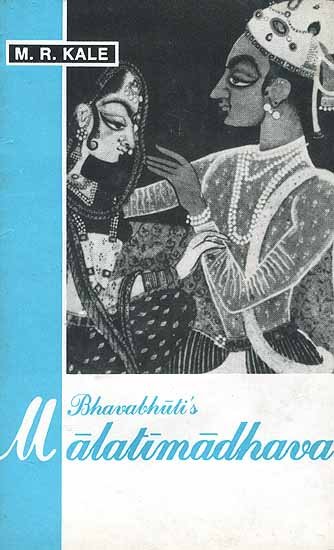Malatimadhava (study)
by Jintu Moni Dutta | 2017 | 52,468 words | ISBN-10: 8120813057 | ISBN-13: 9788120813052
This page relates ‘Definition of Riti (the mode of arranging words)’ from the English study on the Malatimadhava of Bhavabhuti:—A Prakarana type of Drama in ten acts revolving around the love-story of Malati (from Padmāvatī) and Madhava (from Vidarbha). This study discusses the history of its author and the literary, social, religious, historical and cultural aspects of the Malatimadhava.
Part 3.1-2 - Definition of Rīti (the mode of arranging words)
The rīti is another important element of Kāvya. The definition of rīti is given for the first time by Vāmana in his Kāvyālaṃkārasūtravṛtti who defines it as a peculiar arrangement of words.[1]
In the words of Viśvanātha Kavirāja, the rīti assists the realization of sentiment, just as the structure of body assists the soul. Again, according to him the rīti may be defined as the mode of arranging words in a manner which tends to develop the sentiments prevailing in a piece of composition.[2]
Ᾱnandavardhana defines rīti as a wellformed sequence of words which is a concise form of Vāmana’s definition. As he was a rasa theorist, he regarded it as a means of adding charm to the poetic sentiment [3] , while Vāmana’s rīti was evidently independent of rasa.
Viśvanātha practically followed Ᾱnandavardhana, while Rājaśekhara patronised the earlier view of Vāmana.[4]
Kunṭaka, the well-known propunder of the vokrokti theory, made an original contribution to the rīti school. He gave importance to the poet’s svabhāva i.e. personal disposition and described and classified it on the basis thereof.[5]
Types of Rīti:
Regarding the types of rīti though there are many views among the rhetoricians yet the minimum number is three which is accepted by most of the rhetoricians.
Vāmana alludes three varieties of rīti namely—
Viśvanātha,along with these three types, speaks of one more variety which is called Lāṭikā or Lāṭī.[7]
The ancient rhetoricians, Bhāmaha and Daṇḍin recognize only two types of rīti viz.,
- Vaidarbhī and
- Gauḍī.[8]
Bharata on the other hand recognizes five varieties of rīti. They are:
Footnotes and references:
[2]:
padasaṃghaṭanā rītiraṅgasaṃsthāviśeṣavat /upakartrī rasādīnām /
Sāhityadarpaṇa, IX. 1
[3]:
Dvanyāloka, III. 5-6
[4]:
Sāhityadarpaṇa, IX. 1
Kāvyamimāṃsā, III.22-25
[5]:
[7]:
sa punaḥ syāccaturvidhā /
vaidarbhī ca gauḍī ca pāñcālī lāṭikā tathā //
Sāityadarpaṇa,IX.1
[8]:
[9]:
āvantī dākṣinātyā ca tathā caivoḍhramāgadhī /
pāñcālamādhyamā ceti vijñeyāstu pravṛttayaḥ //
Nāṭyaśāstra,VI.25
